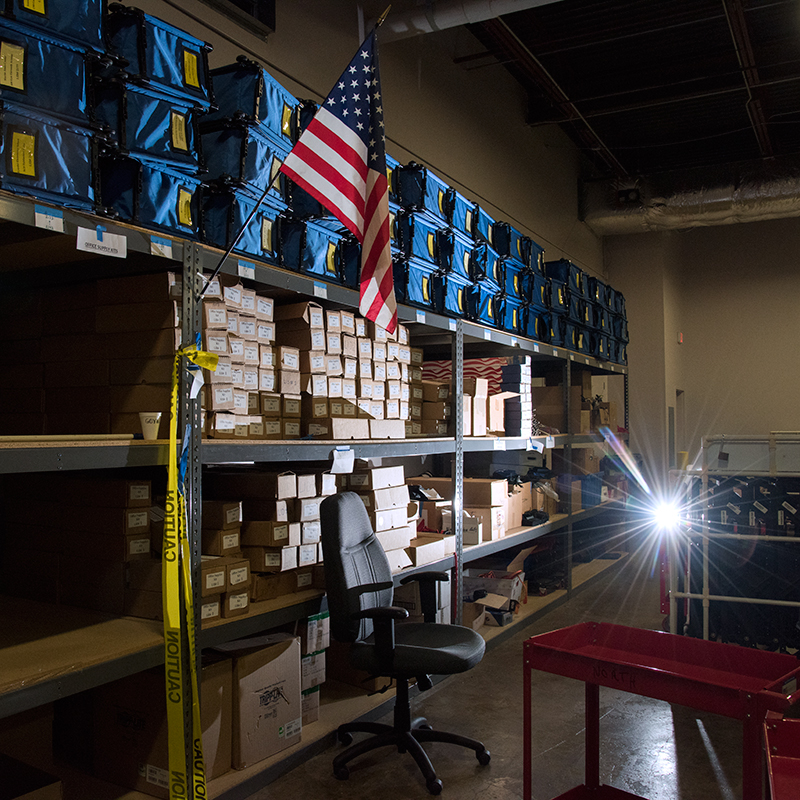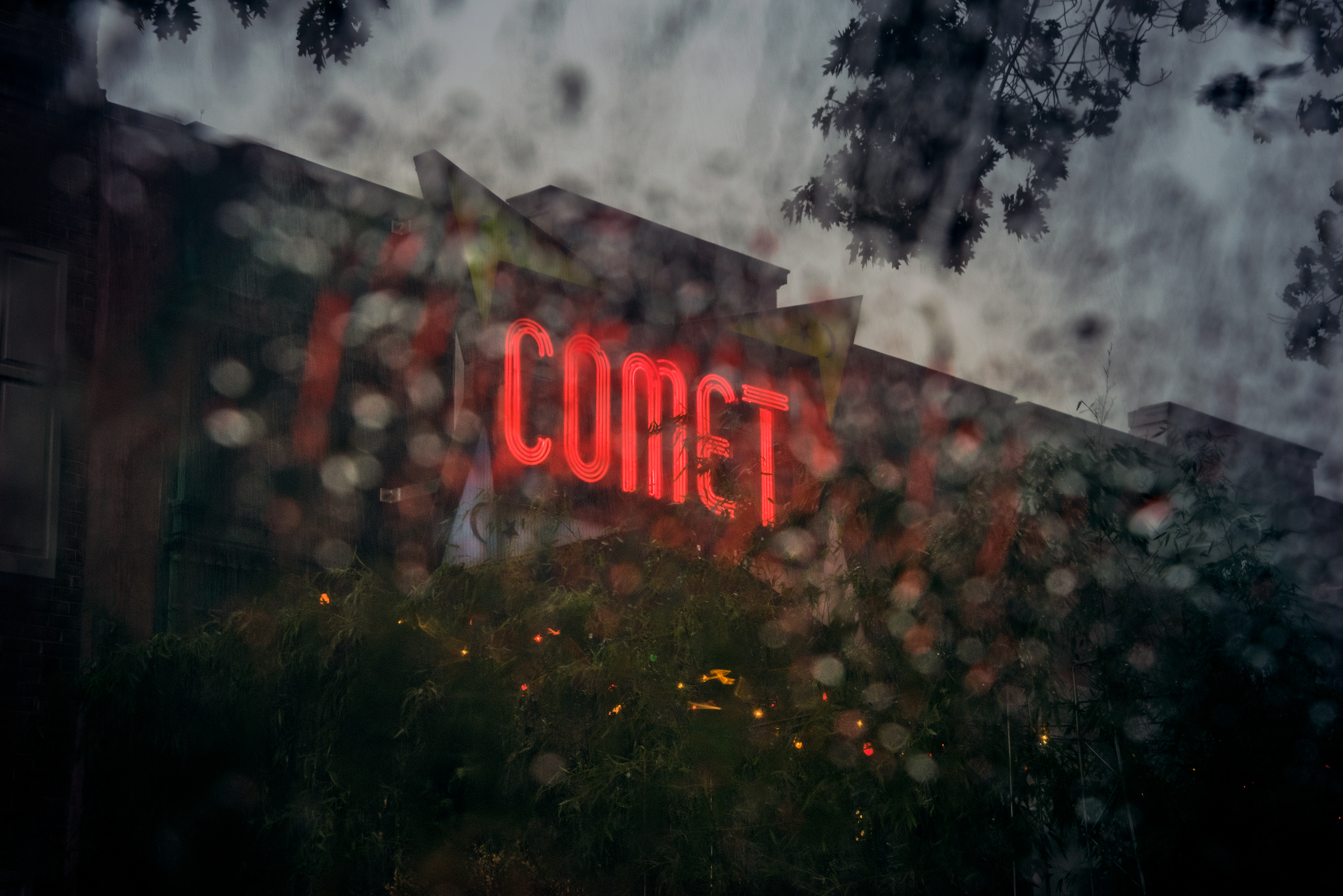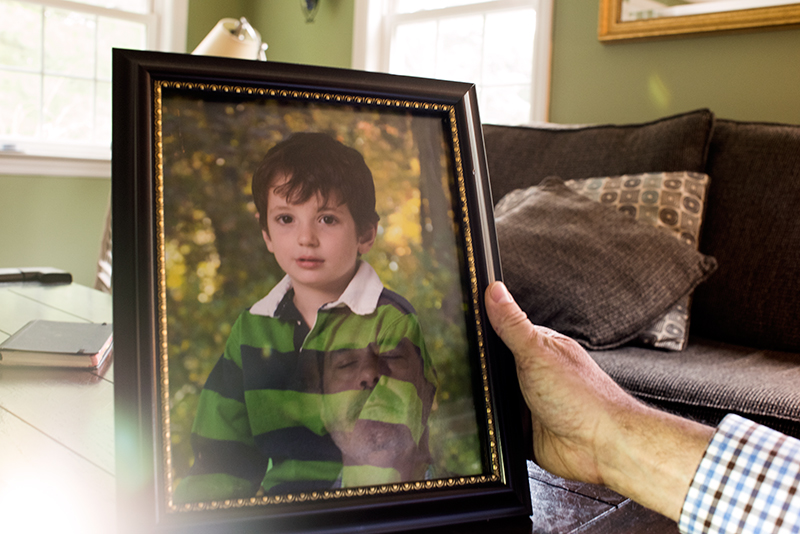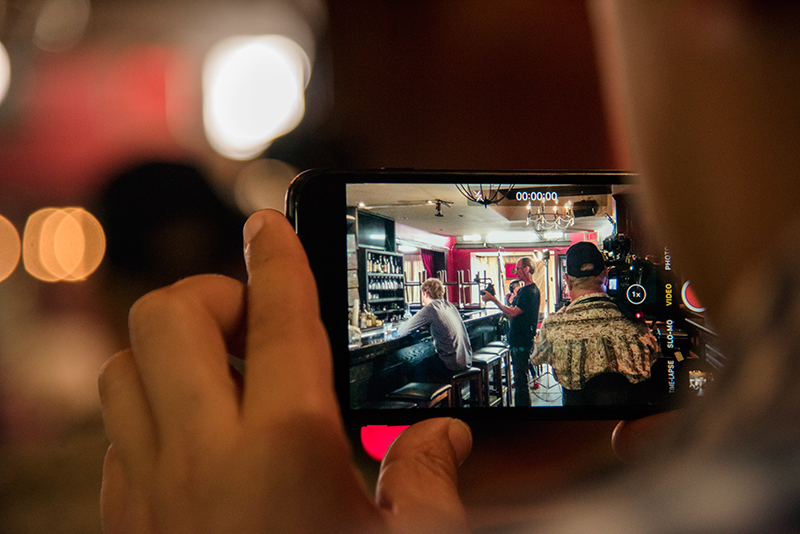Orson Welles proved that Americans could be convinced of anything, even a story as preposterous as armed Martians invading New Jersey. His brilliantly spun 1938 radio broadcast of The War of the Worlds created such havoc it even surprised Welles. The numbers actually duped by his Martian tale have since been disputed by a counter-narrative suggesting that American newspapers hyped the hysteria with fake news reports of panic in an effort to prove that radio, increasingly competitive with print, was an untrustworthy new medium.
“[I]n fact, we weren’t as innocent as we meant to be when we did the Martian broadcast,” Welles said in a 1955 BBC interview. “We were fed up with the way in which everything that came over this new magic box, the radio, was being swallowed . . . so in a way, our broadcast was an assault on the credibility of that machine. We wanted people to understand that they shouldn’t take any opinion pre-digested, and they shouldn’t swallow everything that came through the tap, whether it was radio or not.”
ICYMI: NY journalist handcuffed to railing over his head
Americans are as prone to fear and manipulation now as they were in 1938. But it’s hard to imagine Welles’s tale of extraterrestrial invaders registering even a retweet in today’s media landscape, where conspiracy theories, fake news, and intentional deceptions are churned out daily by everyone from the White House on down and spread in split seconds across tens of millions of magic screens.

Comet Ping Pong in Northwest Washington, DC, focus of one of the highest profile fake-news campaigns (Nina Berman)
The morning after the broadcast, Welles owned up to the hoax and apologized for any harm it might have caused. Today, the most outrageous spinners of hateful, horrific, and fake stories show absolutely no evidence of regret or remorse for the damage they do. On the contrary, refusing to exhibit civil decorum or own up to their lies even when confronted with irrefutable facts often bolsters their reputations.
For this piece, CJR interviewed people who have been on the opposite end of fake news stories. Repeatedly, the victims complained about a lack of accountability. Some declined to speak, fearing any public comment would spark a new round of attacks. The interviews have been edited for length and clarity.
David Wheeler, who lost a child in the 2012 Sandy Hook massacre and has been accused by Second Amendment advocate and conspiracy theorist Alex Jones of Infowars, among others, of falsifying his child’s murder as part of a campaign to undermine gun rights, had this to say: “It has been incredibly painful to have to live through this, to have to face this kind of thing for the offense of speaking publicly, but it comes back to something I landed on days after. From this point forward, are you going to make your decisions out of fear or out of love? I don’t always succeed, but I try like hell to not have my decisions come out of fear.”
ICYMI: ESPN suspended Jemele Hill. We now know the network’s 1st and foremost goal
The manipulation of tragedy
Sandy Hook, Connecticut
On the morning of December 14, 2012, Adam Lanza, 20, stormed into Sandy Hook Elementary School and, in the space of five minutes, shot to death 20 first-grade children and six educators before turning the gun on himself. The incomprehensible tragedy turned the national conversation once again to gun control. While efforts to change federal law have failed, the Connecticut legislature passed some of the strictest gun regulations in the nation.
Shortly after the massacre, stories started circulating on social media claiming that the grieving parents were frauds, that their children hadn’t existed and the massacre never occurred. Sandy Hook parents received death threats. Jones, of Infowars, railed the loudest and most consistently, and continues to question the veracity of the shooting and encourage his millions of viewers to dispute the facts of the tragic massacre.
David Wheeler, father of Benjamin Wheeler, 6, killed in the 2012 Sandy Hook massacre
Somebody set up a couple of fake Twitter accounts for my wife and me, and those were awful. Of course they latched on right away to the fact that we were once actors to justify their theory. They didn’t really have a coherent answer as to why [they say the shooting was] fake, just “He was an actor.” But you never heard about the other 10 dads who work in finance, or the other three dads employed in sales, because that doesn’t fit their twisted narratives.
The way this propaganda works is you take something insane and wrap it in a little bit of truth, and then all those people swallow it because it’s wrapped in a little bit of truth. Look, he was an actor, that’s the little bit of truth they wrapped around me. Well, yes, I was, congratulations, you found someone who once was in theater in a town of 28,000 people 65 miles from New York City. You are a fucking genius.
We were eventually able to close down the Twitter accounts. Twitter has a much more robust end-user agreement regarding truth and transparency [than] YouTube and Facebook, [which] have been much harder.
In the moment, it’s very hard not to click reply and swear and use every facility at my disposal to try to take these people down, but you have to take a breath, and you have to step back, and you have to realize that it’s not about me, it’s not about Benny, it’s not about my family, or even this town or this event. It’s bigger than that, which is comforting and horrifying at the same time.
It comes back to the question of brain pathology, of monological thinking. It comes back to why they have to feel this way, that they know something that you don’t know, that they feel like they have some power, like they matter in the world. They have to prove their narrative because it’s too much a part of how they identify and validate their existence on this planet.
I spent 45 minutes on the phone with Megyn Kelly asking her to not run that show where she interviewed Alex Jones. My point to her was, don’t just hold up this guy and say “Can you believe he thinks this?” That’s not enough. Look into why is he that way, why does he think these things, what happened to him to make him think this? Why?
When you look at this behavior, this unconscionable, devoid-of-any-kind-of-human-empathy behavior that has been directed at us, that’s mental illness.
ICYMI: You might’ve seen the Times‘s Weinstein story. But did you miss the bombshell published days after?
The fraudulent election fraud
Columbus, Ohio
During a campaign stop in Columbus, Ohio, in September 2016, candidate Donald Trump told supporters that he feared the election would be “rigged.” A month later, a digital outlet called the Christian Times Newspaper (CTN) published a story claiming that tens of thousands of fake Hillary Clinton ballots had been found in a Columbus warehouse. A photograph accompanying the story showed a “maintenance worker” with stacks of ballot boxes. An estimated six million people saw the piece. Concerned citizens called to report the fraud to the Franklin County Board of Elections.
The story and CTN were both phony, conjured up by 23-year-old Cameron Harris, an aspiring political consultant and Republican legislative aide based in Annapolis, Maryland. He created the fake site to sell Web ads by spreading anti-Clinton stories he knew would resonate with pro-Trump voters. The various hoaxes earned him about $22,000, and his site’s value surged as high as $125,000. The story was debunked by the Franklin County Board of Elections, the Ohio Secretary of State, Snopes, The New York Times, and others. As a result, Harris lost his job; his site’s value dropped to zero after Google decided to pull ads from fake news sites in November, following Trump’s election.

A warehouse stocked with voting supplies at the Franklin County Board of Elections office in Columbus, Ohio (Nina Berman)
Aaron Sellers, Public Information Officer for the Franklin County Board of Elections
I had recently started as the public information person at the board, so this was [a] trial by fire.
A call came from a woman in Michigan about a story where they had found ballots in this dilapidated building downtown. Early voting was about to begin. We knew that it wasn’t real. We don’t have ballot boxes like that. It didn’t pass the smell test.
Within 24 hours, we put a release out to all the media contacts. And the secretary of state got out in front of it and put out a release. We responded back to every single individual who reached out to us. So we tried to be as proactive and reactive as we could to nip it in the bud.
You do kind of take it personally. We’re trying to do our job. We’re trying to do it correctly. We want people voting. That goes across the party lines. So when we hear about things that try to cast a negative light on the election process, it’s kind of sad, and it’s malicious. It’s harmful to democracy, regardless of what your politics are.
Creating narrative from murder
Washington, DC
Seth Rich, 27, a Democratic National Committee staffer working on voter expansion, was gunned down in the early morning hours of July 10, 2016, near his home in Washington, DC, in what police called a botched robbery attempt in a neighborhood that has seen an uptick in street crime.
The murder inspired various conspiracy theories that imagined Rich as an embittered Bernie Sanders supporter who provided damaging DNC emails to WikiLeaks and was assassinated by a Clinton hit team as punishment. Fox News reporter Malia Zimmerman ran with a story claiming inaccurately that law enforcement had confirmed the Rich-WikiLeaks connection. Others, including Fox News host Sean Hannity, Alex Jones, various Republican party donors, and Newt Gingrich, piled on in support of the conspiracy theory. A lawsuit filed in August by an independent investigator formerly retained by the Rich family against Zimmerman and Fox News claims that the White House, and Donald Trump personally, signed off on the fake Rich narrative.
Republican lawyer and lobbyist Jack Burkman went so far as to produce and record on video a staged re-enactment of the murder, in which an actor playing Rich confides to a bartender that he has money troubles, but also a secret plan to sort things out. After this supposed confession, two actors playing assailants confront Rich and shoot him in the back. Burkman suggested that a video of the re-enactment, to be distributed on social media, might help solve the crime. The Rich family has repeatedly rejected the conspiracy theories, and called the re-enactment “gross and disgusting.”
The escalation of Pizzagate
Washington, DC
In early November 2016, soon after WikiLeaks published hacked emails from Hillary Clinton’s campaign manager John Podesta, posts started appearing in various chat groups, including 4Chan and Reddit, focusing on Comet Ping Pong, a popular pizza place in Northwest Washington owned by James Alefantis, who was mentioned in one of Podesta’s emails. The posts described a cavernous venue with creepy murals and secret symbols of pedophilia and perversion. The restaurant, it was alleged, was a front for a vast child sex trafficking ring operated by prominent Democrats. The alleged perpetrators communicated in code through images of butterflies and spirals that appeared on dinner menus and storefronts.
The furor around what was dubbed Pizzagate escalated into social media attacks, phone calls, and daily death threats against Comet Ping Pong and surrounding businesses, including the owners of Politics and Prose bookstore, a DC institution. On December 4, 2016, Edgar Maddison Welch, 28, walked into Comet Ping Pong and fired several shots from an AR-15 assault rifle. He was looking to rescue the children he wrongly believed were being abused there. No one was hurt, and Welch was arrested and later pleaded guilty to illegally transporting firearms across state lines and assault with a dangerous weapon.
Some Pizzagate believers claimed Welch’s assault was a false flag operation, a covertly planned event carried out for propaganda reasons, or designed to cast blame away from those who secretly orchestrated the operation.

Lissa Muscatine and Bradley Graham, co-owners of Politics and Prose bookstore, near Comet Ping Pong (Nina Berman)
Bradley Graham
We had an event going on that day. [Former Democratic politician and author] Mark Shriver was giving a talk. At 3pm, we saw the police, guns drawn. We were told to stay indoors and
to stay away from the windows. Instinctively,
we made the link to the social media threats.
We had gotten frustrated with the police and the FBI because they didn’t seem to be doing much to address our concerns. One reason law enforcement didn’t act earlier is that they’re overwhelmed. Everyone is getting threats these days. They have to prioritize.
Lissa Muscatine
You have a person at the top encouraging, inspiring it, and engaging in fake news. The greatest disseminator of fake news is the president of the United States.
Hollywood joins the fake-news fray
Houston, Texas
A questionable marketing ploy backfired in early 2017, when 20th Century Fox and Regency Enterprises set up five fake local news sites supposedly based around the country to promote A Cure for Wellness, a horror movie centered on the notion of a dubious cure. One of those sites was the fake Houston Leader, which mirrored a popular community newspaper, The Leader. The fake Leader planted outrageous stories on the real Leader’s Facebook page about vegans being prone to mental illness and a widely shared post that claimed Lady Gaga was planning a tribute to Muslims at the Super Bowl. Readers from all over the world contacted the paper’s publisher in Houston demanding answers. The story was debunked by The New York Times and BuzzFeed, forcing 20th Century Fox to apologize (but not to The Leader) and withdraw the campaign.
Jonathan McElvy, Publisher of The Leader
I came up as a journalist, but I run the business now. It’s my responsibility to make the payroll for 30 employees in our company. We fight for every dollar, and part of that fight is our brand. If they wanted to buy our front page and take over our website for a week and use our audience and send out links, they could have paid [us] 10 or 15 grand.
The guy who built their fake website, they probably paid him half a million dollars, maybe more than that. In the end, it was a horrible marketing strategy.
There has been absolutely no accountability, and that just drives me mad. That was the emotional part of this thing: How dare you? What is the precedent we are setting that no one got held accountable?
Nina Berman is a photographer and an associate professor at Columbia University Graduate School of Journalism





